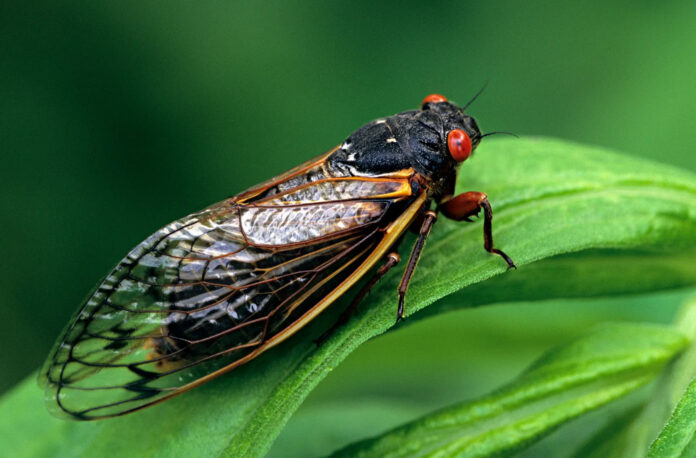The 13- and 17-year cicadas emerge in the eastern part of North America, illustrating a rare phenomenon that only occurs every 221 years
By MARLE LAMOUNTRY— science@theaggie.org
Every 13 and 17 years, a natural phenomenon occurs in the eastern part of North America that captivates scientists and nature lovers alike — the emergence of periodical cicadas. These fascinating insects are known for their unique life cycle. They spend 99% of their lives underground as nymphs and the other 1% above ground in their adult stage.
Currently, both the 13- and 17-year periodical cicadas are waking up, an occurrence that can only be witnessed every 221 years. The last phenomenon hasn’t occurred since 1803.
Unlike their annual counterparts, periodical cicadas have a prolonged life cycle that lasts for 13 or 17 years, depending on the species. For the majority of their lives, these insects feed on the xylem of tree roots as underground nymphs. Only during their short adult life stage can the cicadas court, mate and lay their eggs, creating a new generation. With periodical cicadas, there is only one age class in each brood.
One of the most astounding qualities of periodical cicadas is their synchronized emergence. Each brood is packed with thousands of nymphs underground, so millions of cicadas emerge from the soil within a short window of only three weeks. Rick Karban, a professor of entomology and nematology at UC Davis, described their emergence patterns.
“[It’s] fantastic about how in sync it is,” Karban said. “Millions of individuals come out of the ground within a few days of each other. Those that come out too early or too late get eaten by predators, so there’s tight selection.”
Entomologists have found that these insects take cues from their host plants to emerge, such as the temperature of the soil. Their synchronized emergence and long odd-numbered years in their life cycles are believed to be an evolutionary adaptation, but what triggers their synchronized emergence remains unknown.
Lynn Kimsey, a professor of entomology at UC Davis and the former director of the Bohart Museum of Entomology, spoke about the mystery behind their emergence patterns.
“They [may] do this to outrun predators [or] parasites, but we don’t really know,” Kimsey said. “We don’t really know much about them.”
Despite the mysteries surrounding their behavior, periodical cicadas play a crucial role in forest ecosystems. Since they emerge in large numbers, they serve as a great food source for predators, including birds, mammals and even humans. They are also beneficial to plants, as their waste and decomposing bodies contribute to nutrient cycles.
Louie Yang, a professor and ecologist at UC Davis, spoke about the ecological importance of these insects.
“They almost immediately get eaten,” Yang said. “A lot of animals that [traditionally] eat cicadas eat them […] They represent a substantial resource pulse and aggregate resource, especially in the forest. We can see some of their effects in the soil, microbes and plants.”
As we watch the emergence of periodical cicadas, many people have sensationalized their stories, creating a version of events that differs from reality.
Karban offers a different perspective.
“To some extent, [these stories are] pretty different from what is getting hyped in the national media,” Karban said. “[The cicadas] will be emerging close to each other, but the same tree will not be supporting both 13- and 17-year-old cicadas. It’s actually not clear that they will be coming into contact with each other.”
Written by: Marle Lamountry — science@theaggie.org





